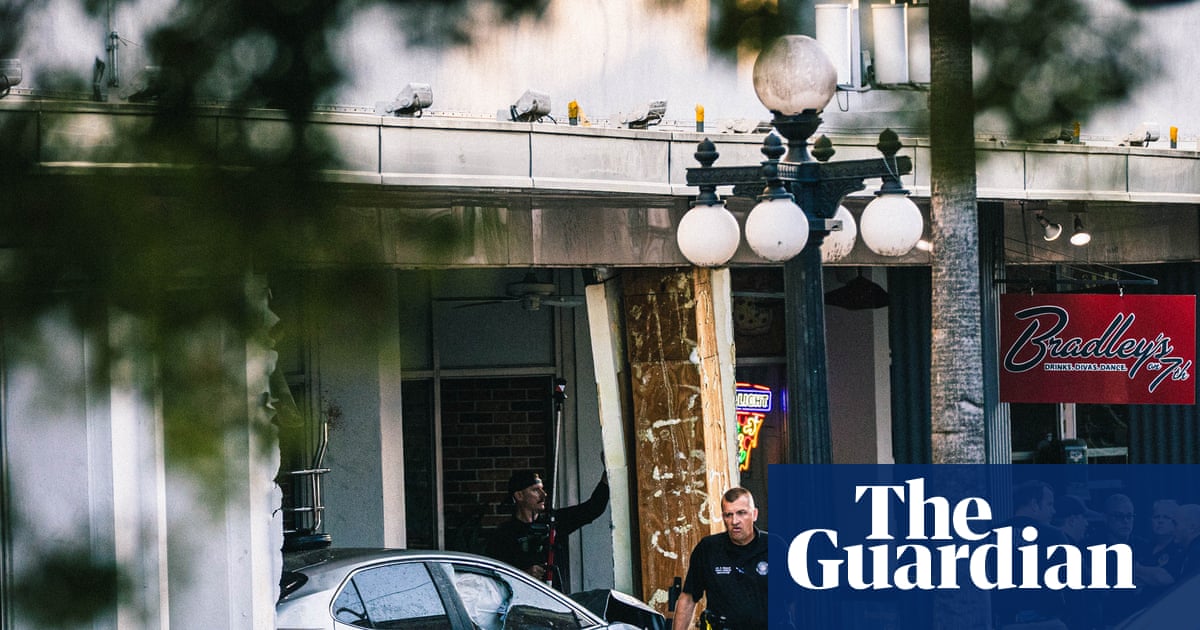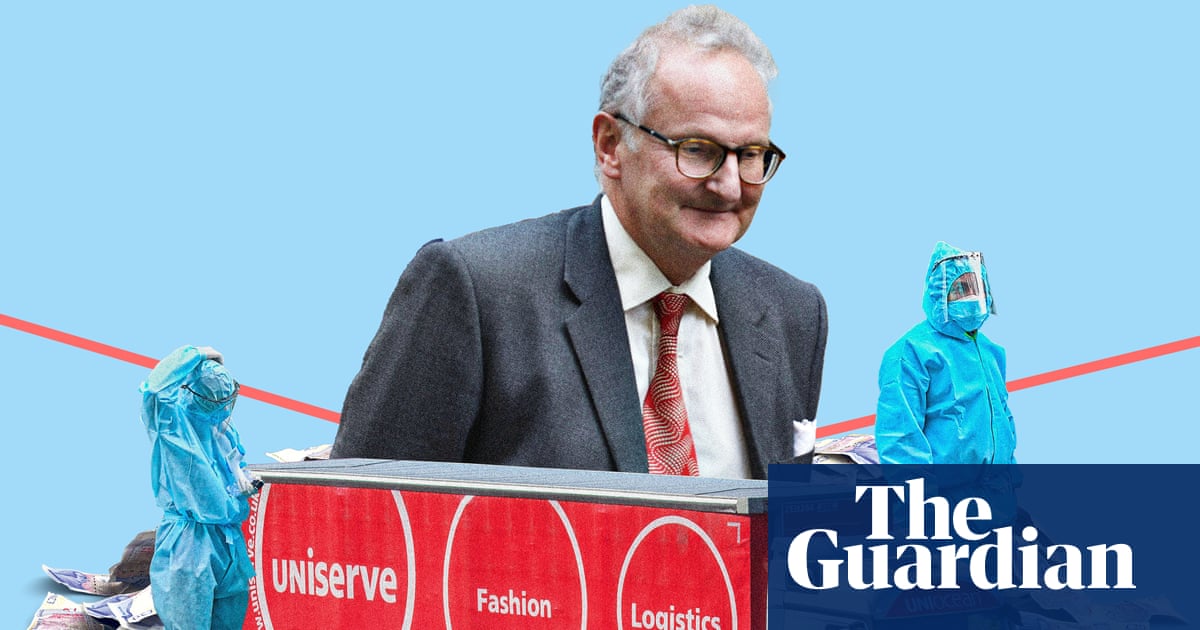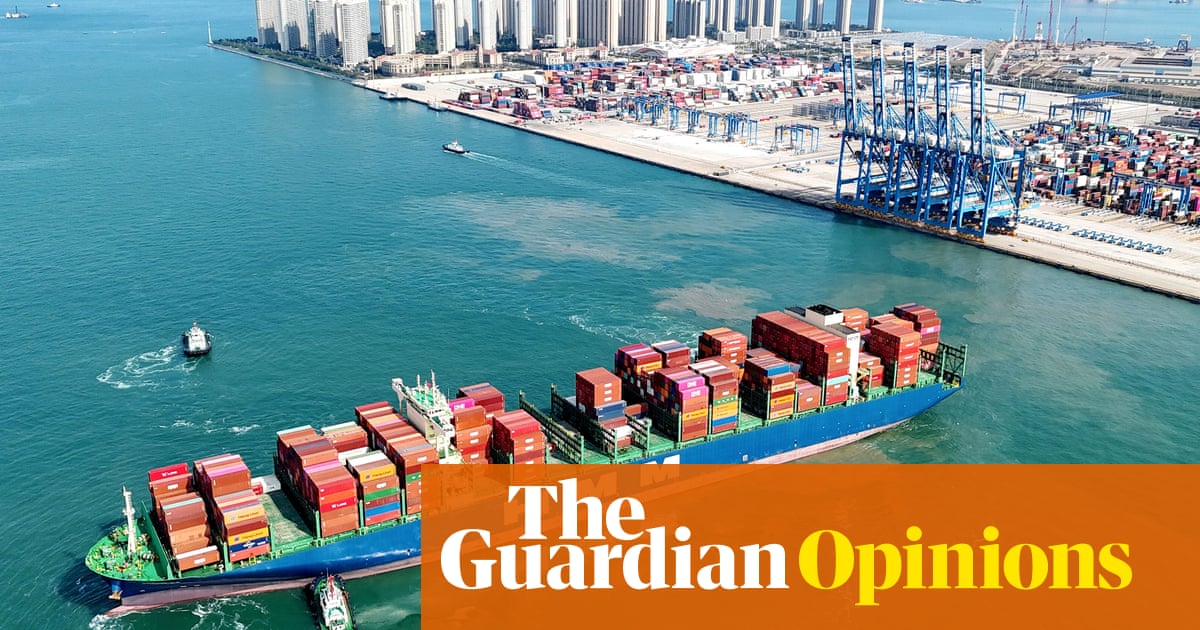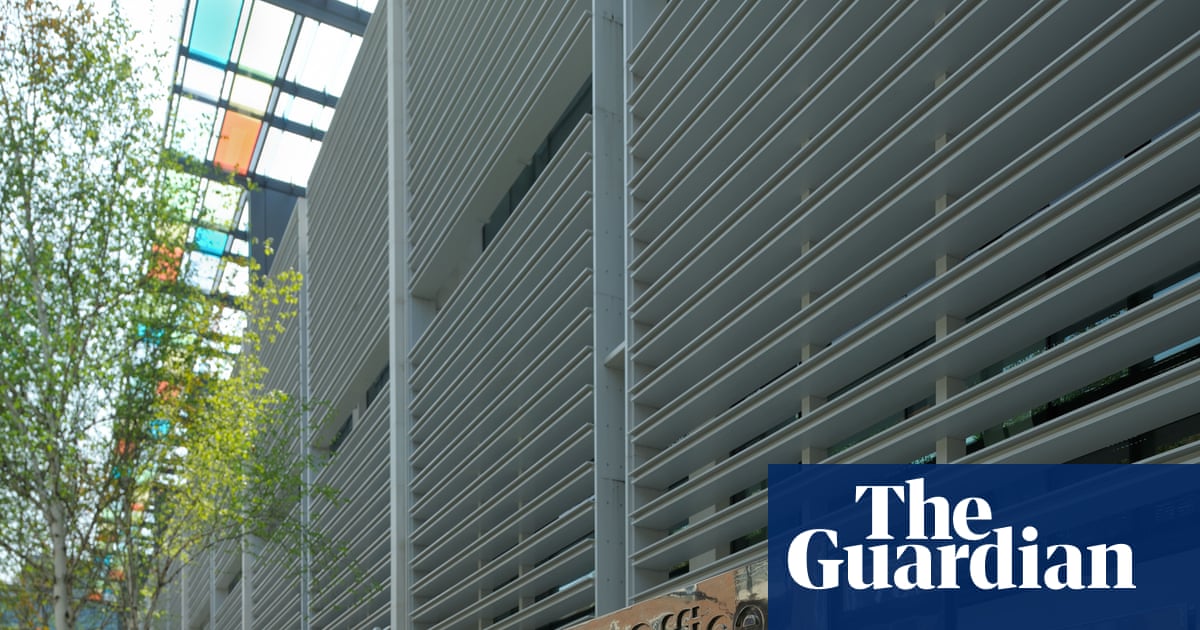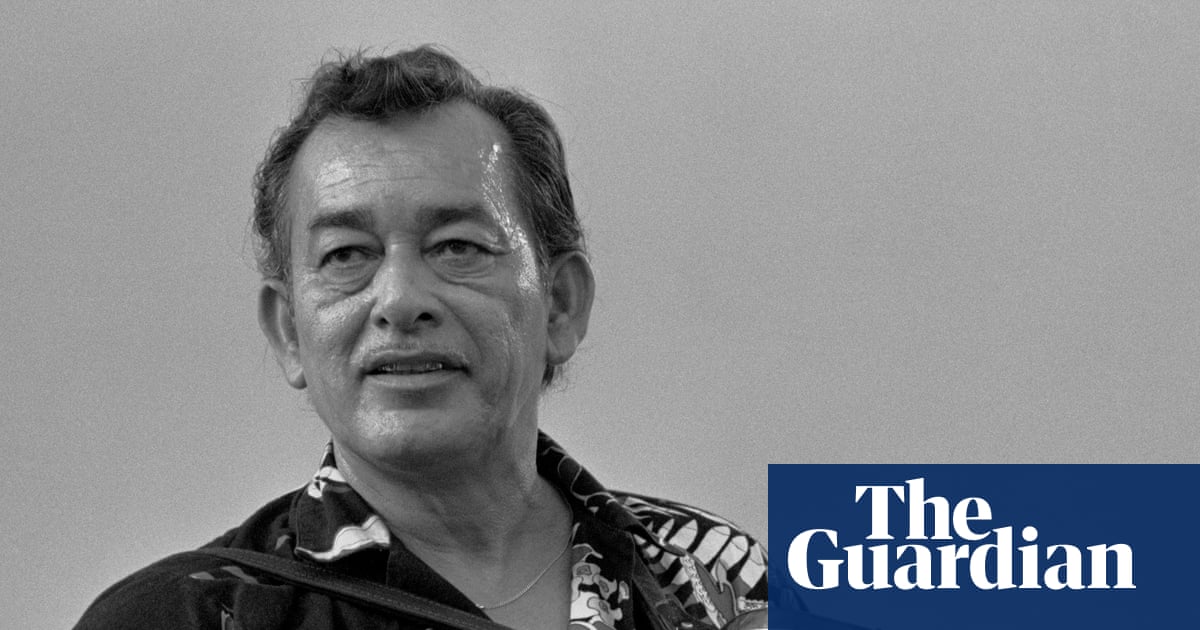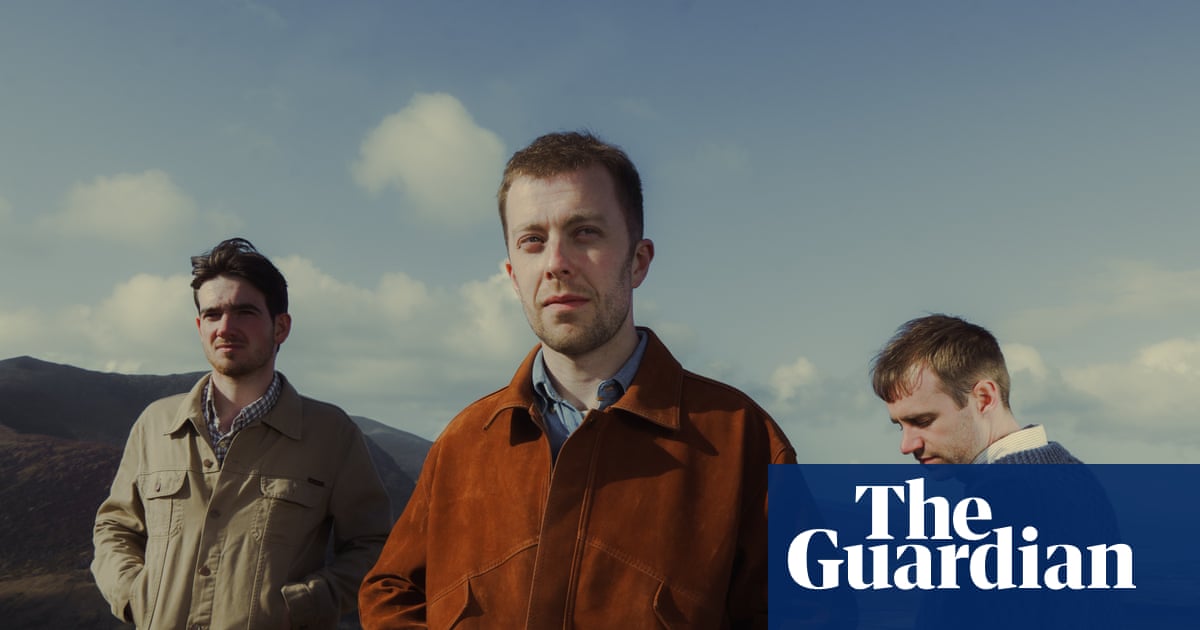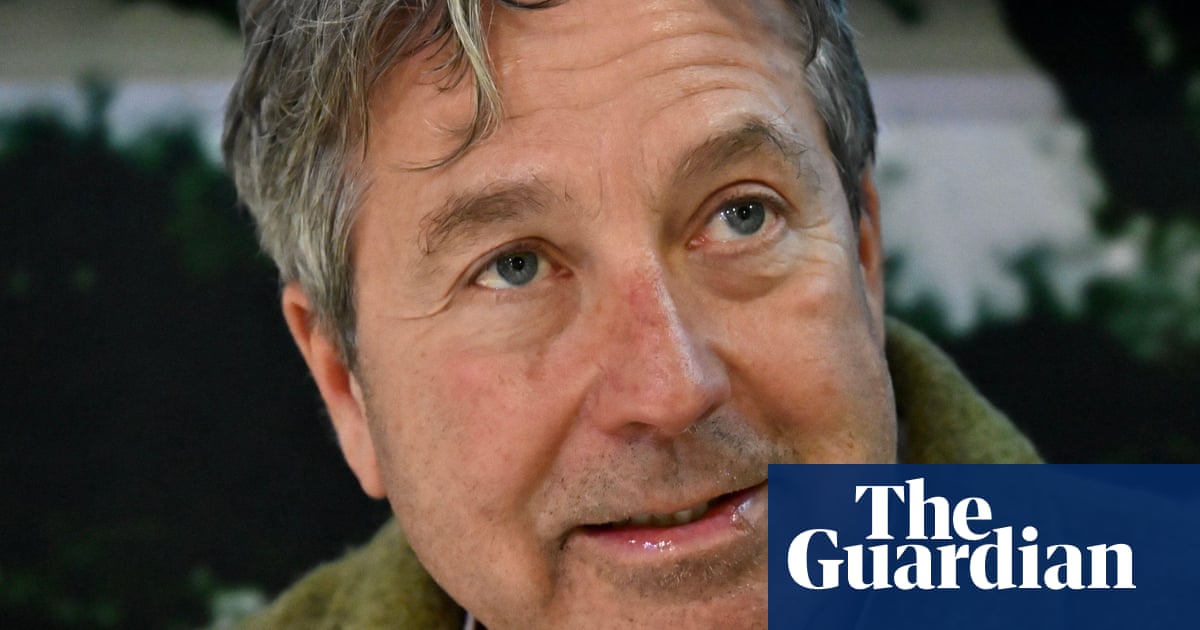Golden grasses, mossy hummocks and scattered lakes unfurl across the highlands of Macizo del Cajas, Azuay province. The vastness of this high-altitude Ecuadorian moorland combines with its near-silence to create an empty, alien atmosphere.
But this unique landscape teems with life. The páramo – a high-altitude tropical ecosystem that stretches across the northern Andes – is a living sponge, quietly drawing moisture from the clouds that drift at more than 3,000 metres (9,800ft) above sea level.
Endangered mountain tapirs and endemic hummingbirds hide among the twisted, copper-barked Polylepis trees.
Beneath the ground, ancient tectonic shifts and glaciers have cracked the bedrock, channelling water through veins that feed six large rivers, supplying mountain communities, cities and fragile ecosystems – including the Ecuadorian Amazon.
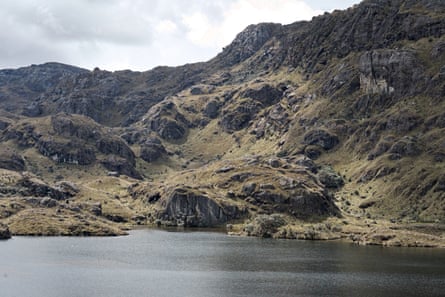
That bedrock, however, also holds billions of dollars in gold, silver and copper. For more than three decades, these deposits have made the Cajas a battlefield between Ecuadorians who see large-scale mining as the answer to the country’s economic woes and those who see it as an existential threat.
Breaking ground
Unesco designated the Cajas a biosphere reserve in 2013, but the title offers scant protection. Mining companies now hold more than 100,000 hectares (247,000 acres) of concessions in the Cajas, with more than 15,000 of those hectares in the páramo.
Authorities say that the government has given the most important segments of ecosystems protected or national park status. But scientists argue that the zoning is arbitrary.
“What areas are ‘protected’ is a political decision, not a technical one,” says Juan Carlos Sánchez-Nivicela, a herpetologist and conservation biologist who has been studying Ecuador’s high-altitude ecosystems for more than a decade. “You can’t separate these areas. Any damage done to one directly affects the other.”
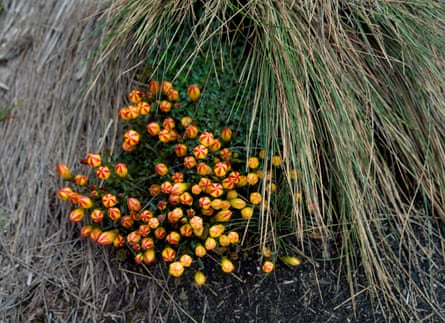
So far, large-scale mining activity in the páramos has been limited to exploration – in part, thanks to local resistance, inside and outside the courtroom. But now, new battle lines are being drawn in the Cajas.
On 23 June, the Canadian mining multinational Dundee Precious Metals was granted its environmental licence for exploitation of the Loma Larga project, which sits on the Quimsacocha páramo and surrounds the protected area.
“The company has satisfactorily fulfilled all requirements and prerequisites necessary … which is very difficult and time consuming in my country,” says Patricio Vargas Coronel, president of Cuenca’s Chamber of Mining.
“It can now sign the mining contract and begin construction, generating about 1,200 jobs and an investment of $450m (£337m).”
Dundee’s president and CEO, David Rae, touts the achievement as “an important milestone for Loma Larga – an attractive future growth opportunity for [Dundee] with significant potential to deliver strong returns for our investors and stakeholders”.

Activists and ecologists, however, allege that the mine could cause enormous environmental damage, that the government has failed to properly consult local communities, and that they are subject to intimidation and surveillance for protesting against the mine. Dundee rejects the claims.
Fragile ecosystems
“We are being followed,” says Esther Remache, an anti-mining activist, pointing out the white pickup truck trailing behind.
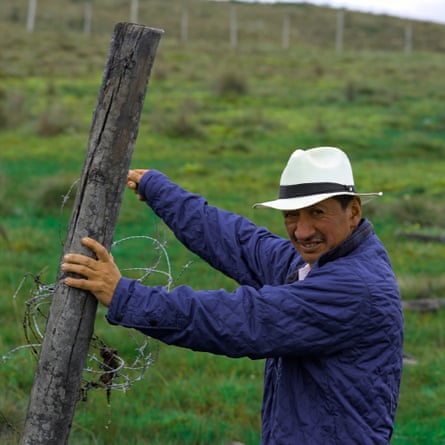
“Oh, they’re just looking after us,” replies Federico Guzmán, councillor for Cuenca and another longtime activist, with a wink.
The road to Loma Larga is public, and cuts through the Quimsacocha recreation area. Yet, it’s lined with private security personnel who peer out from booths guarding the offices and buildings of Dundee Precious Metals.
As Guzman parks his vehicle, the pickup behind also stops and a guard exits, using his phone to film the group of activists, almost all of whom are over 60.
“They always follow us when we go up here,” says Remache, who believes this is an intimidation technique. “They’ll openly photograph us … you have to wonder, what are those photos for?”
In a letter to the Guardian, Dundee representatives denied these allegations, noting that all Loma Larga security personnel “have undergone human rights training and behave with full respect”. They said that the project’s fence had been frequently vandalised, and guards took action to prevent trespassing, but that Dundee “regularly welcomes visitors to the project area”.

Quimsacocha, a páramo at an altitude between 3,600m and 3,900m, is a vital water source and biodiversity refuge. It’s here that Sánchez-Nivicela says he rediscovered a tiny frog thought to be extinct.
“There’s something like 20-plus amphibian species in the Cajas: 80 to 90% of these are endemic – but we keep finding more each year,” he says.
Scientists warn that mining in Cajas could irreversibly destroy fragile ecosystems and poison the water supply that hundreds of thousands of people depend on.
“Protection is not just a matter of the environment,” says Sandra Barros, a municipal hydrology engineer who evaluated the risks of the Loma Larga project. “It is a matter of survival.”

Several past referendums held in affected communities had rejected mining in local watersheds. In 2023, a provincial court upheld the decision to suspend the Loma Larga project, but also opened the door for Dundee to revive its project if new environmental studies and local consultations showed support.
A new era of Ecuadorian mining
In April, Daniel Noboa, the country’s recently re-elected president, extended the Loma Larga concession for another 25 years. In 2024, he attended the world’s largest mining conference in Canada to reassure investors that a new era of Ecuadorian mining was dawning.
Current gold prices value Loma Larga’s estimated deposits at more than $6bn. Ecuador’s government also stands to make hundreds of millions from the project.
On 23 June, the country’s environmental ministry quietly approved the project’s environmental licence – the final hurdle for Dundee to begin exploitation.
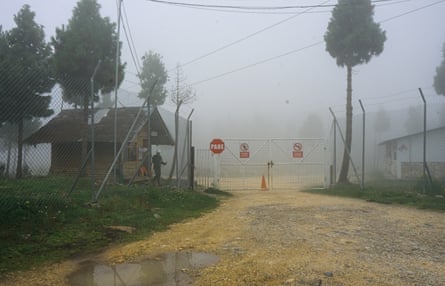
Dundee’s environmental impact assessment (EIA) for Loma Larga claimed mining posed only a “mild risk” to the ecosystem. However, a study by the municipal water and sanitation company (ETAPA) claimed there were dozens of errors and omissions in that assessment. It concluded mining risked serious, potentially irreversible damage to nature, water resources, and public health in the Quimsacocha region. Other studies corroborate the ETAPA’s findings.
“Do you think contamination would stop at some arbitrary red line just because [the mining company] says that’s where their impact stops? Of course not. Any contamination will end up in the rivers downstream,” says Barros, the ETAPA study’s main author.
Dundee, however, called the ETAPAreport “misinformation” and says that it is “designing and advancing Loma Larga in line with the highest standards for environmental and water management”, pointing to the positive results of its EIA, the evaluation and approval of which “is the sole responsibility of the ministry for the environment, not ETAPA”.
The environment ministry did not respond to the Guardian’s requests for comment, and on July 24, Noboa eliminated the environment ministry entirely, transferring its responsibilities to fall under the ministry for mining.
Mother of all battles
Ecuador’s constitution requires the government to consult local and Indigenous communities before allowing any mining project to begin.
Under Noboa, however, allegations of irregularities in this process have become so widespread that UN human rights officials issued a formal warning last year, saying Indigenous groups and local communities were being excluded from consultations, not offered complete information, and arrested for protest or criticism of projects.
“We are concerned that the failure to convene all potentially affected people, together with the lack of full and impartial information regarding the potential negative consequences of these projects have exacerbated social conflict,” the UN experts say.
In other parts of Ecuador, the government has responded to protests with force. When communities protested against Canadian mining in Ecuador’s north-western cloud forest last year, Noboa sent in the military. Security forces injured at least 36 people, and more than 100 were charged with terrorism or organised crime offences.
In May, the ministry of energy and mines (MEM) said authorities had finished consulting local communities on Loma Larga, and reported that they had agreed to let the project proceed to exploitation. Communities had “access to ample, timely and adequate information” on the vote, MEM said.
But community members and activists had a starkly different view of the consultation: of eight interviewed, not one said they knew that it had taken place.

They recalled a day in January, when the environment ministry sent 200 police and troops to “oversee” a vote on the mine outside town. Instead, one said, authorities were forced to cancel the vote.
“People saw the soldiers, the militarised area, the tents and they showed up to protest,” says Nataly Torres, a sociologist and member of the community.
In its report, MEM characterises the protest as “violent incidents … restricting the right of other members of the community to be consulted”. Dundee says it cooperated with all of Ecuador’s “strict and well-defined regulations”. In a statement, the ministry said that communities had been consulted in accordance with the law.
The fear of state violence now hangs over environmental defenders in the Cajas region as well, activists say.
“Now, they have bigger, deadlier arms, and they use them to intimidate us,” Remache says.

And the stakes are high for biodiversity, water and communities. “Any disturbance, any change in land use, any extractive activity [in the Cajas] will directly affect species that have nowhere else to go,” Sánchez says. ”We’ll lose not only unique species but also the water supplying entire communities,” he adds.
And the outcome here may set a precedent for the rest of Ecuador.
“This is the mother of all battles,” says Carlos Castro, a legal professor and opponent of mining in the region. “If we lose here, the rest will fall like dominoes.”
Find more age of extinction coverage here, and follow the biodiversity reporters Phoebe Weston and Patrick Greenfield in the Guardian app for more nature coverage

 3 months ago
145
3 months ago
145





